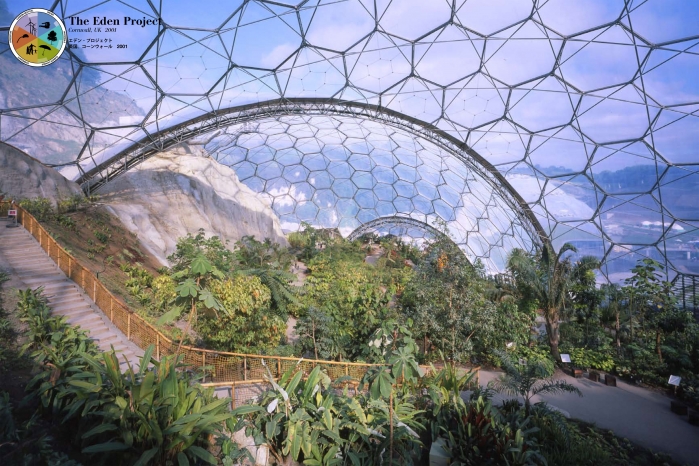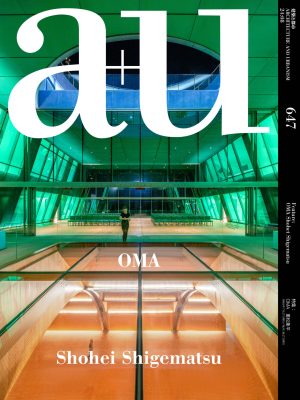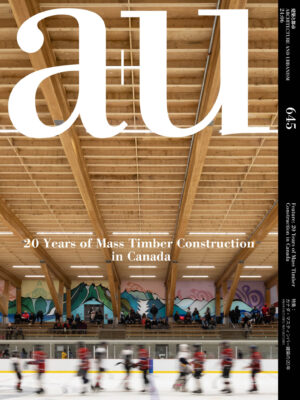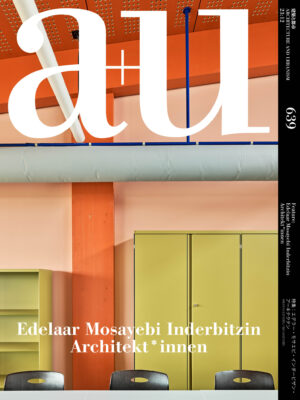a+u 2011:04 Arup and Sustainable Buildings
Content
Feature: Arup and Sustainable Buildings
Currents: Winners of the Young Architects Program at MoMA/P.S.1 and MAXXI / BIG to Design Greenlands NewNational Gallery / Made In Architects Wins Kaohsiung Maritime Cultural & Popular Music Center Competition
The built environment exerts a major influence on society and our surroundings, and today one of the most important concerns of architectural design is the realization of sustainability. By now, it is rare to see it discussed without the words green or environmentally friendly.
However, it is not easy to clarify what we have to do, and how, to achieve sustainability in the built environment.
This issue features Arup and sustainable buildings. With more than 90 offices in over 30 countries, Arup is one of the worlds leading professional services firms. It is known as a pioneer in environmental engineering as well as in structural engineering. Arup is not only well versed in assessment methods such as LEED in the USA, BREEAM in the UK, Green Star in Australia, and CASBEE in Japan, but has also developed its own methodology for the realization of sustainability. Arups Designing Sustainable Buildings strategy has six objectives, involving carbon, water, materials, climate change, community and the environment, and operations. These six objectives are provided to the client and shared with the design team on every project. In his essay Alistair Guthrie explains the strategy and outlines the methodology in detail. The graphic symbols beside the title of each project in this issue were visualized by Arup in order to show the six objectives and the degree of achievement of the Designing Sustainable Buildings strategy. (See p. 14 for how to read the symbols.)
This issue introduces about 50 works as case studies categorized by building type. Most have been completed over the last ten years. This issue also features three essays: one on the concept of total design proposed by Ove Arup, the founder of Arup, and its reflection in the work of the firm; another on integrated urbanism, dealing with masterplan proposals for communities and wider areas; and another on architecture for the ecological age, which looks forward to the city of 2050. There is also a glossary on sustainable building at the back of the issue.
We hope that this issue will provide the reader with concrete and practical insights into sustainable design. a+u would like to express our appreciation to Alistair Guthrie and Arup staff from all over the world for their cooperation, including the Tokyo office, which provided guidance on the translation of engineering terminology into Japanese. (a+u)
Essay:
The Challenge of Sustainability
Alistair Guthrie
Arts and Leisure
The Eden Project
DPI Queenscliff
Beijing National Aquatics Center
California Academy of Sciences
Melbourne Cricket Ground
Westport Lake Visitor Centre
Medieval and Renaissance Galleries, V&A
Education and Research
Nottingham University
Kresge Foundation
Druk White Lotus
Ghana Kindergarten School
Malawi Schools
Essay:
How a Global Firm can Make a Difference
Martin Ansley-Young
Dartington Primary School
Jessop West
Acharacle Primary School
Princeton University Chemistry Building
Yale School of Forestry
Kirsch Centre for Environmental Studies
Stanford Environment and Energy Building
Essay:
Arup and Sustainable Design
Ben Richardson
Housing
BedZED
One Earth Homes, Upton Square
Barratt Green House
Redevelopment of Upper Ngau Tau Kok Estate
Phases 2 & 3
Samsung Green Tomorrow
Offices (new and existing)
Arup Campus Phase One
CitiData Centre
Harlequin 1
Plantation Place
3 Assembly Square
Ropemaker Place
Worldwide Fund for Nature HQ
RAAF Richmond
The Shard (London Bridge Tower)
Beijing Nokia BDA Campus
Parkview Green Beijing
39 Hunter Street
Joseph Vance Building
Unilever House
Essay:
Integrated Urbanism
Sophie Noble and Malcolm Smith
Urban Planning and Travel
Beijing Capital International Airport Terminal 3
Zurich Airport
Sunny Bay Station
Low2No
Abengoa Business Park
Mallorca Beach Front
Essay:
Architecture for the Ecological Age: the City in 2050
Declan O Carroll and Michael Beaven
Sustainable Buildings Glossary
















